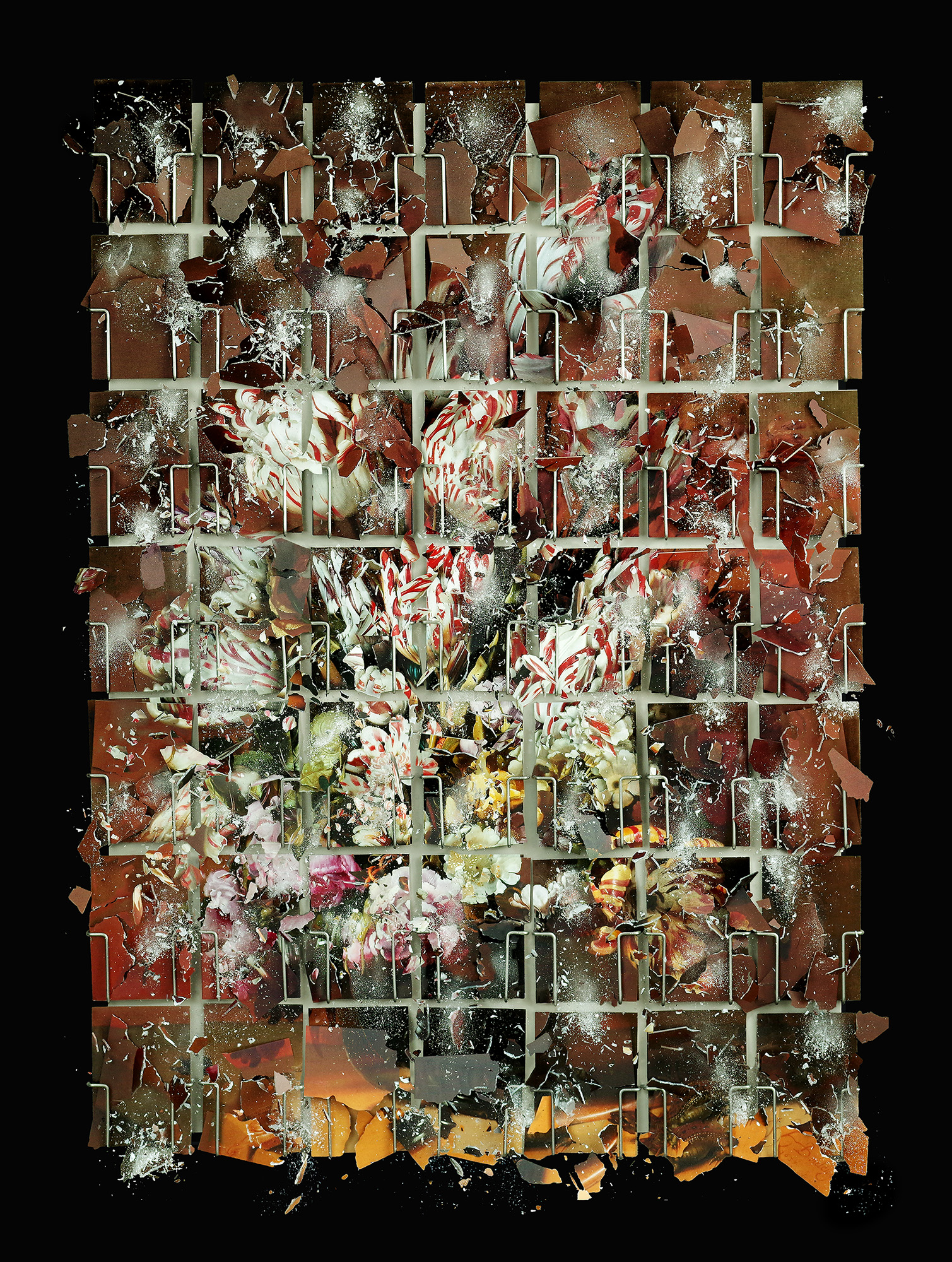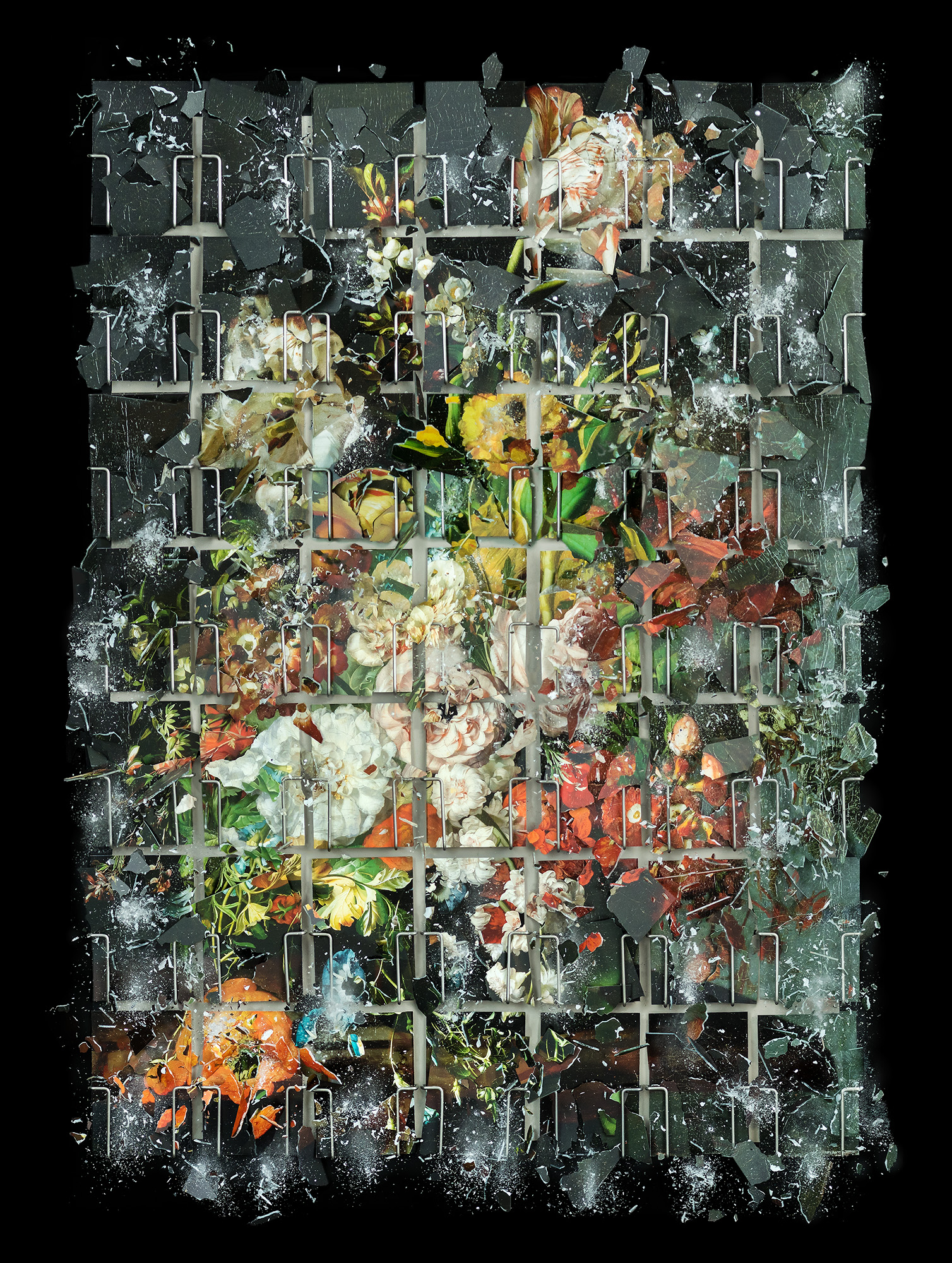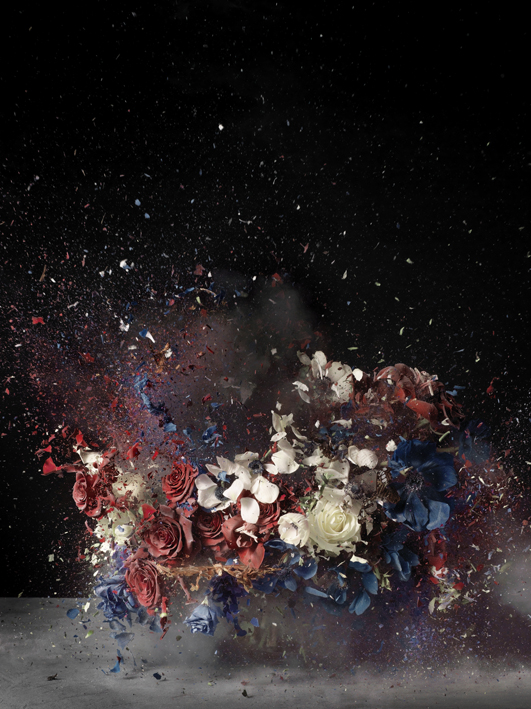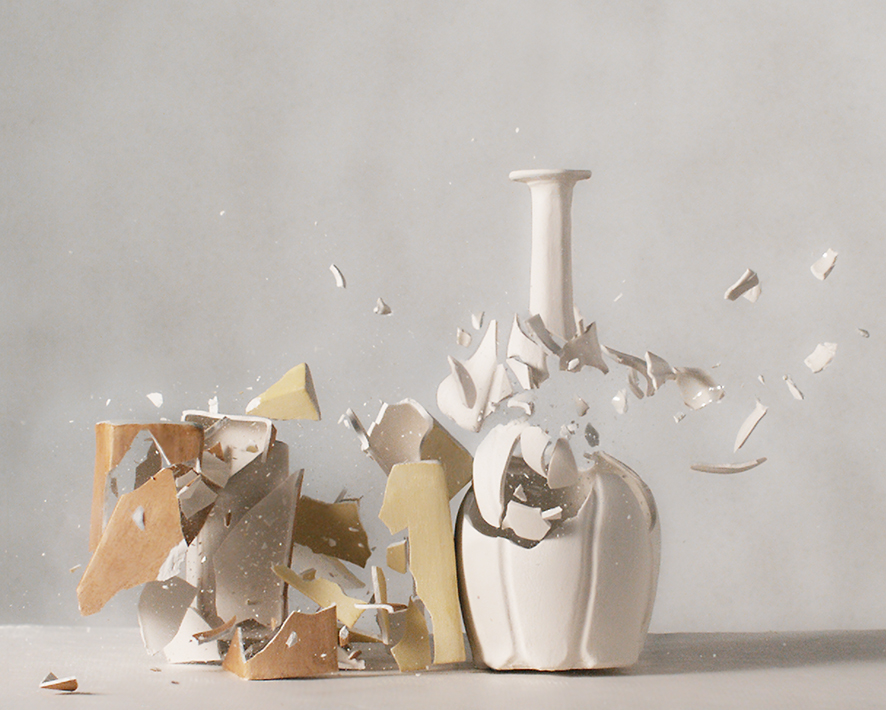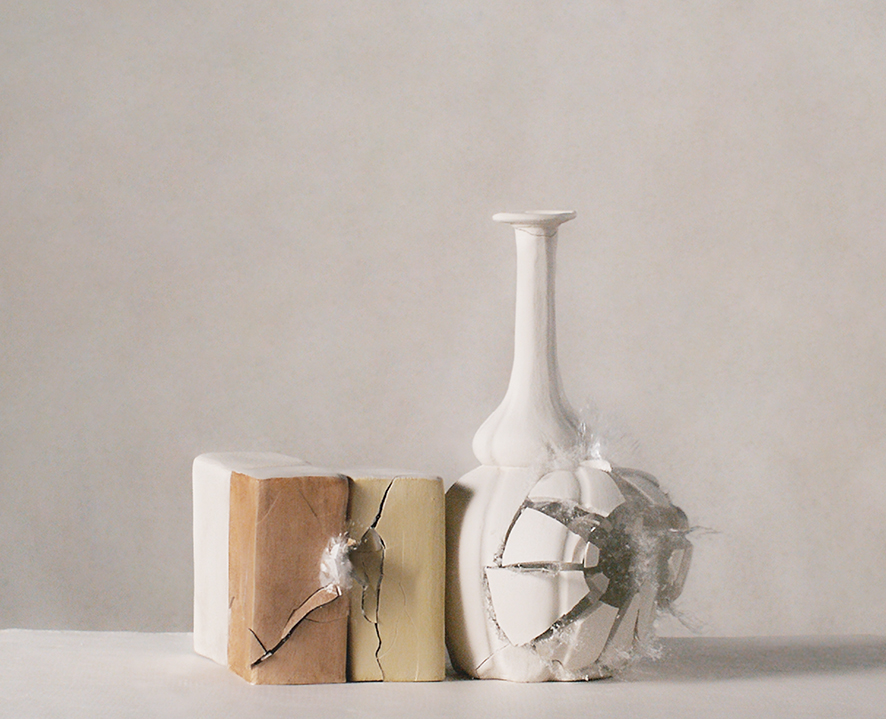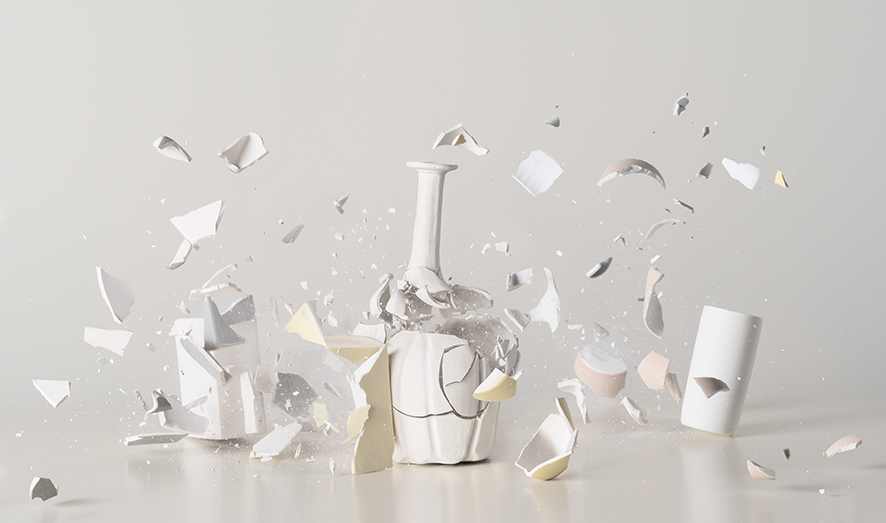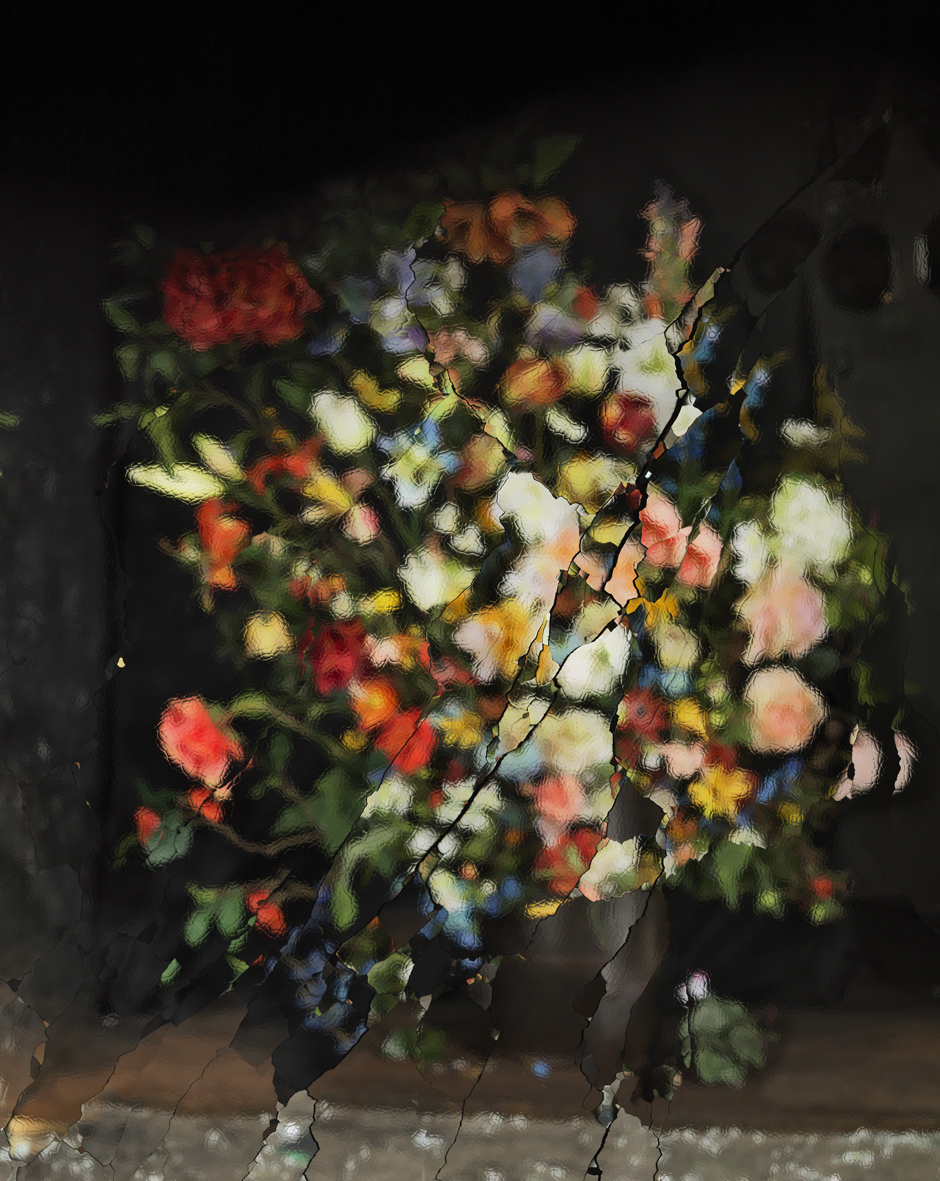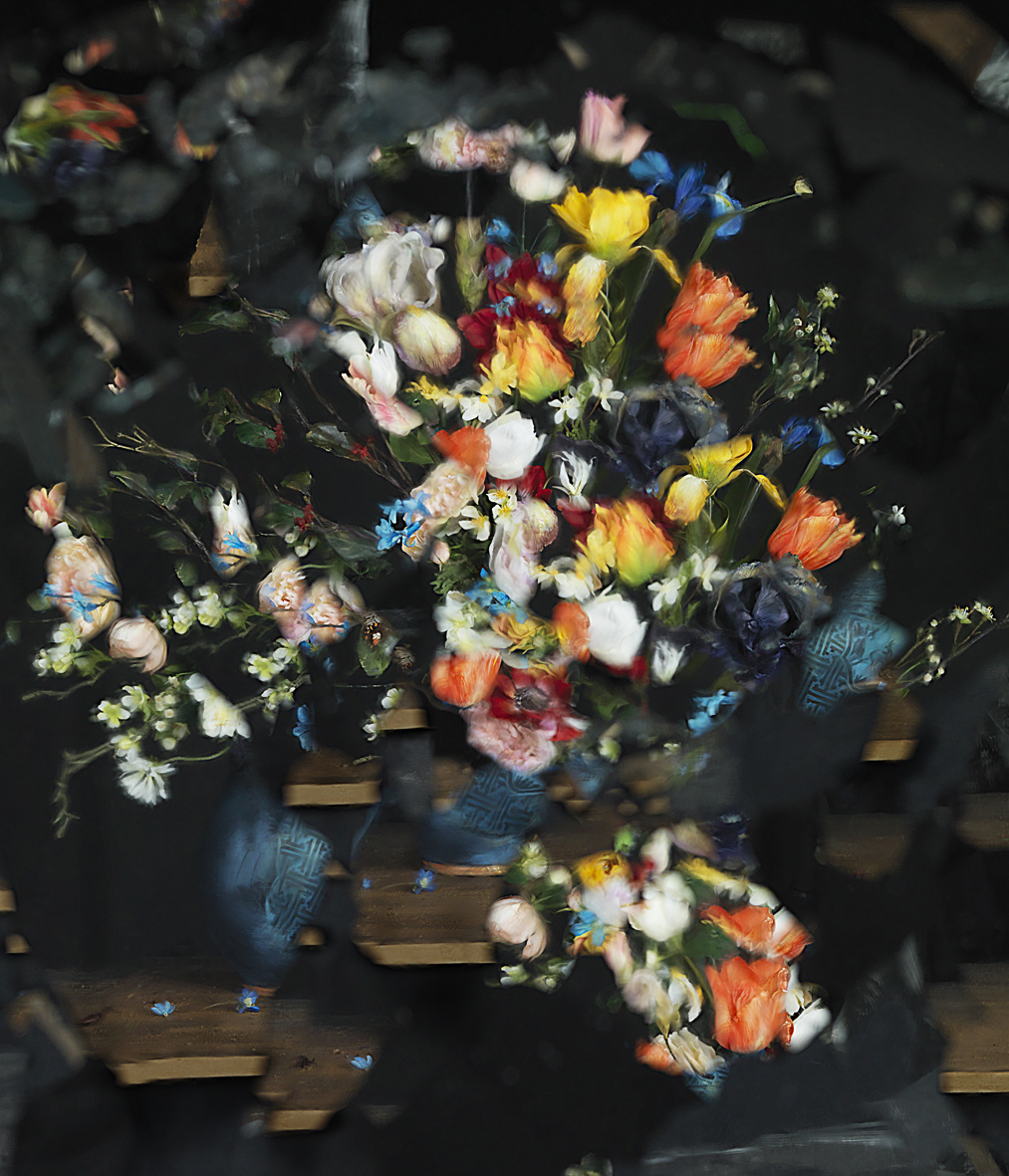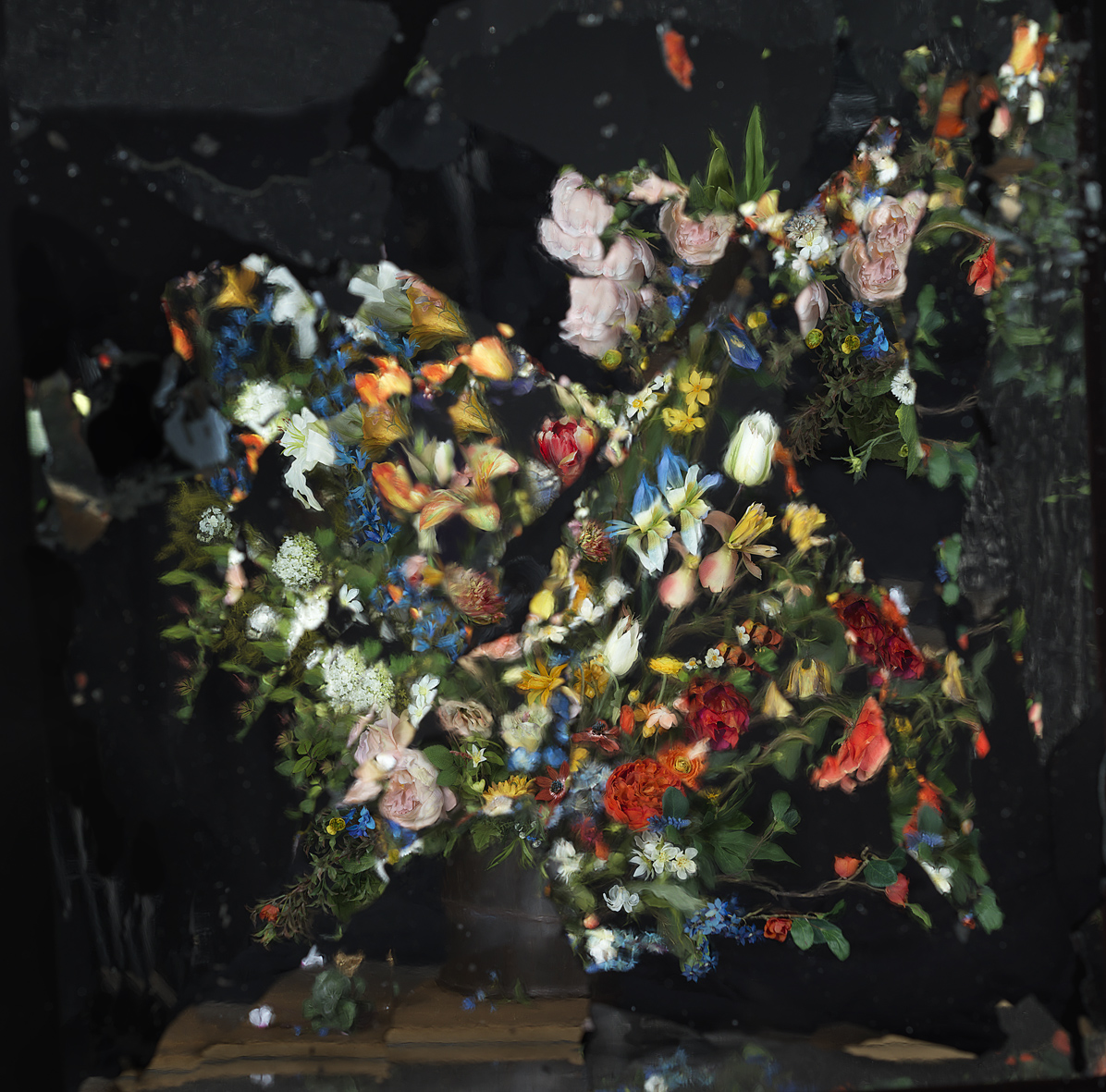Focus on Still Life: Ori Gersht
A juxtaposition of beauty, violence, history, and poeticism defines Ori Gersht’s still life work. Gersht finds inspiration from the contradictory nature of the art museum: curated spaces which, according to him, are an attempt to present an ordered narrative from fragments taken from their original contexts. As an aspiring art historian myself, Gersht’s work is especially meaningful; one could easily find his featured icons in the halls of a 16th – 18th Century Northern European Painting exhibit: a shadowy floral arrangement, a banquet scene, traditional portraitsof 17th century noblemen. Using metaphors of history through imagery evoking Netherlandish masters, Gersht turns the still life genre on its head with his shocking images of these meticulously staged objects hit with high velocity gunfire. Born in Tel Aviv, Gersht’s work is both uniquely technologically striking and a deeply personal reflection on his own upbringing and the Holocaust experiences of his family. Gersht pushes the boundaries of still life as his eerily beautiful work grapples with the imperfect nature of photography to capture violence, reality, and history.
Gersht recently opened the exhibition, Altered States, at the Yancey Richardson Gallery in New York, running through December 23rd, 2021.

©Ori Gerhst, Revelations in the Folds of Time 01 (J. Paul Getty Museum), 2021. Archival pigment print, 46 x 53 1/2 inches.
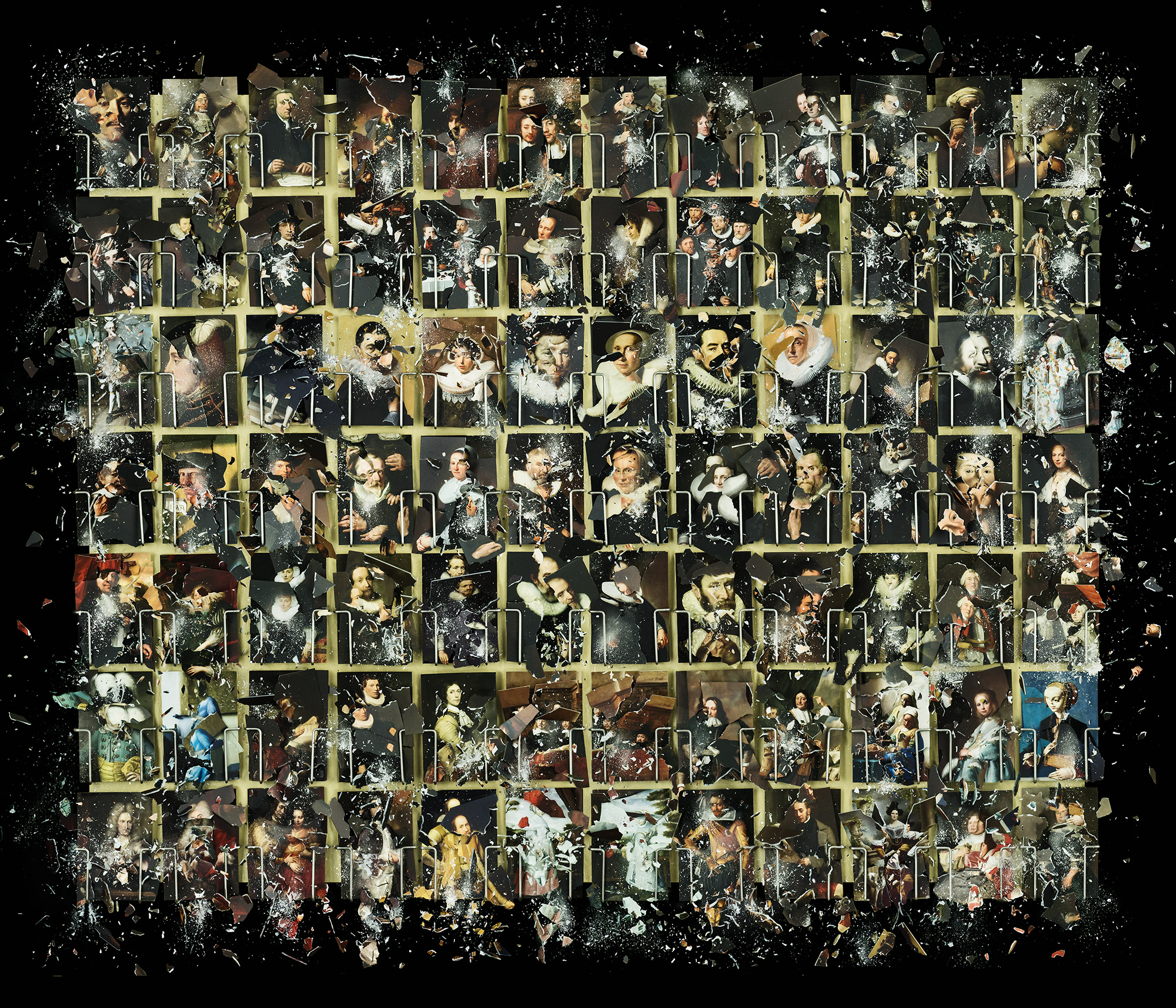
©Ori Gerhst, Revelations in the Folds of Time 02 (Rijksmuseum), 2021. Archival pigment print, 46 x 53 1/2 inches.
Born in Israel in 1967, Ori Gersht has lived in London since 1988. He received his MA in Photography and Film from the Royal College of Art. The artist’s work has been the subject of solo exhibitions at the Museum of Fine Art Boston, Tel Aviv Museum of Contemporary Art, Imperial War Museum London, Israel Museum, Jerusalem, Santa Barbara Museum of Art, and Hirschhorn Museum and Sculpture Garden. Gersht’s new augmented reality piece Forget Me Not is currently on view in the exhibition Seeing the Invisible, originated by the Jerusalem Botanical Gardens and concurrently on view at ten international gardens. Forget Me Not will also feature as the signature artwork for the 2021 United Nations Climate Change Conference. Gersht’s photographs and videos are included in many institutional collections such as The Getty Museum, Guggenheim Museum, Jewish Museum, Los Angeles County Museum of Art, San Francisco Museum of Modern Art, Tate Modern, and Philadelphia Museum of Art, among others. Follow Ori on Instagram: @origersht
In Becoming, Gersht explores the fundamental relationship between creation and entropy through the canonical structure imposed by museums upon their collections. In the artist’s studio, images of paintings drawn from the postcard collections of the Metropolitan Museum of Art, New York, The Getty Museum, Los Angeles, and the Rijksmuseum, Amsterdam are printed onto analogously sized sheets of glass and then carefully arranged on a specially constructed wall that mimics a traditional postcard display. Order cedes to chaos as each wall of glass is methodically shattered. Recorded by the camera at the instant of destruction, a new space of creation emerges. In this photographic space, Gersht visualizes the entropic forces that these institutional systems resist as the images shatter into dispersed fragments of collective memory, perhaps returning to the state of disorder from which they originated. In Wall 01, a large-scale work constructed with over 200 postcards from the Metropolitan Museum, pivotal art historical works from the 16th – 19th centuries are shown at the moment of collapse. In the companion piece Wreckage Upon Wreckage, comprised of the shattered fragments from Wall 01, the strata of art history coalesce into a single plane, undermining the linearity imposed by the institutions. In this unregulated chaos, a treasure hunt of new compositions and narratives materializes. – Yancey Richardson
Natalie Cooney is pursuing an M.A. in art history and curatorial studies at City College of New York. Her research has focused on the history of photography with a range of focus from Victorian post-mortem photography to contemporary work, and is expecting to finish her studies in May 2022. Prior to graduate school, Cooney was the gallery director for the New Orleans Photo Alliance, where she worked closely with photographers to produce exhibitions which elevated artists based in Louisiana and throughout the United States. She has also worked with PhotoNOLA to help produce the annual photo festival and portfolio reviews.. She currently resides in Brooklyn, New York.
Posts on Lenscratch may not be reproduced without the permission of the Lenscratch staff and the photographer.
Recommended
-
Salua Ares: Absense as FormNovember 29th, 2025
-
Ricardo Miguel Hernández: When the memory turns to dust and Beyond PainNovember 28th, 2025
-
Pamela Landau Connolly: Columbus DriveNovember 26th, 2025
-
KELIY ANDERSON-STALEY: Wilderness No longer at the Edge of ThingsNovember 19th, 2025
-
Jackie Mulder: Thought TrailsNovember 18th, 2025

